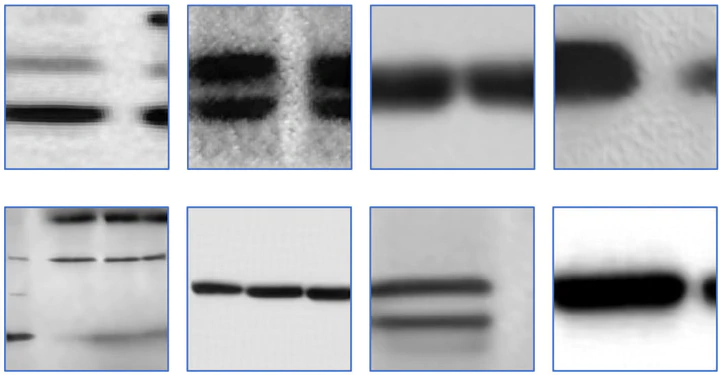
Abstract
The widespread diffusion of synthetically generated content is a serious threat that needs urgent countermeasures. As a matter of fact, the generation of synthetic content is not restricted to multimedia data like videos, photographs or audio sequences, but covers a significantly vast area that can include biological images as well, such as western blot and microscopic images. In this paper, we focus on the detection of synthetically generated western blot images. These images are largely explored in the biomedical literature and it has been already shown they can be easily counterfeited with few hopes to spot manipulations by visual inspection or by using standard forensics detectors. To overcome the absence of publicly available data for this task, we create a new dataset comprising more than 14K original western blot images and 24K synthetic western blot images, generated using four different state-of-the-art generation methods. We investigate different strategies to detect synthetic western blots, exploring binary classification methods as well as one-class detectors. In both scenarios, we never exploit synthetic western blot images at training stage. The achieved results show that synthetically generated western blot images can be spot with good accuracy, even though the exploited detectors are not optimized over synthetic versions of these scientific images. We also test the robustness of the developed detectors against post-processing operations commonly performed on scientific images, showing that we can be robust to JPEG compression and that some generative models are easily recognizable, despite the application of editing might alter the artifacts they leave.